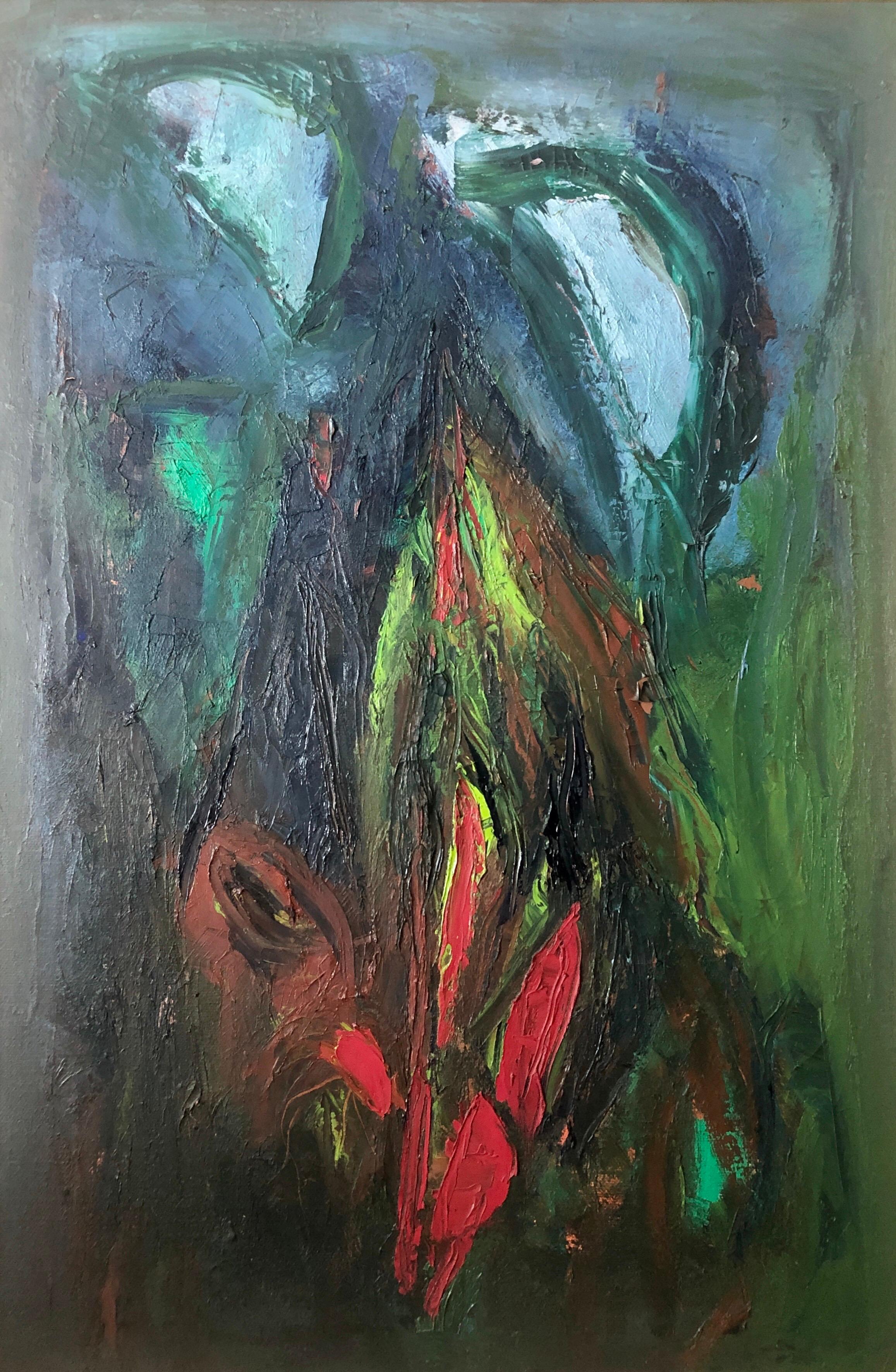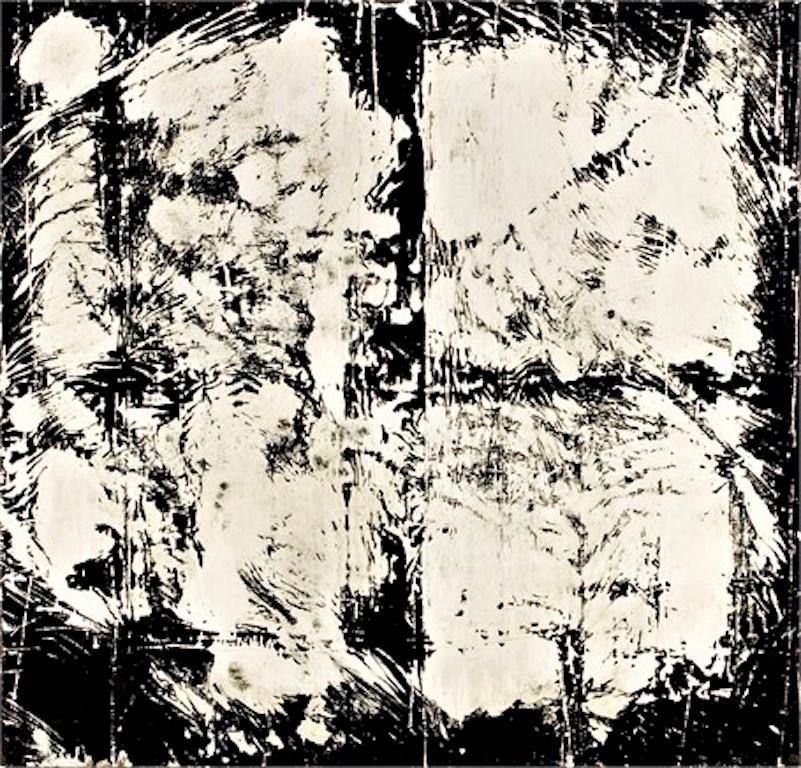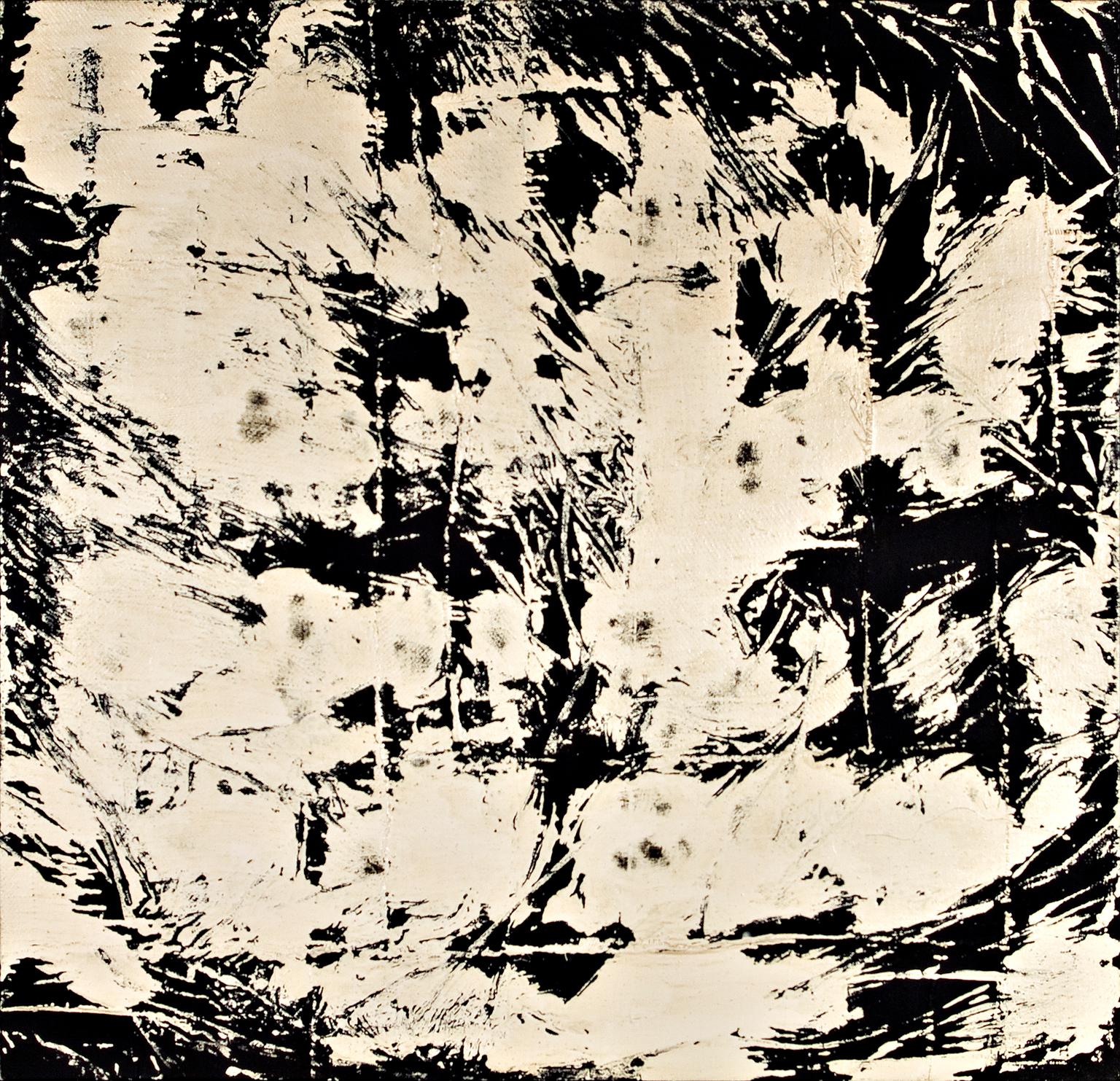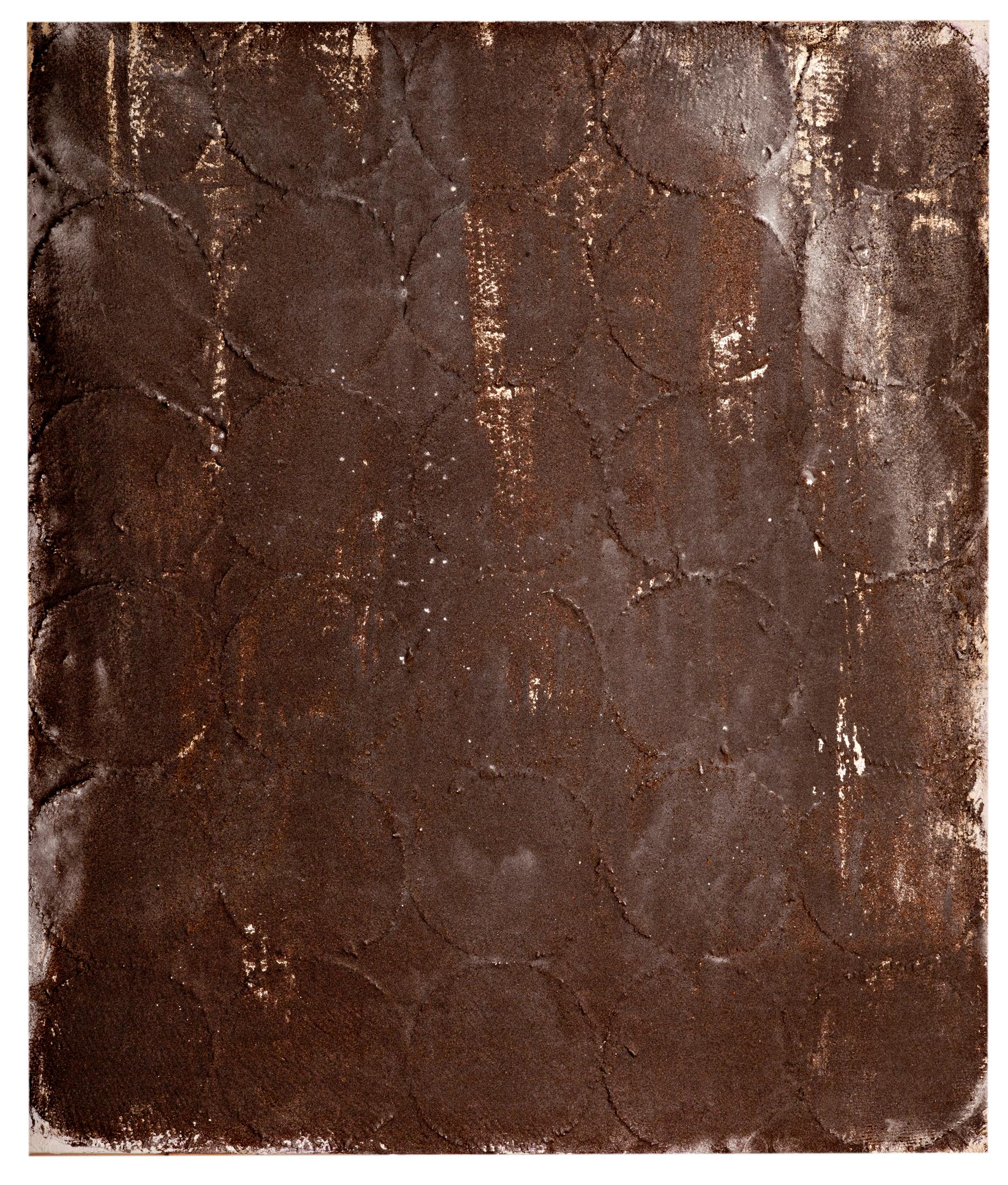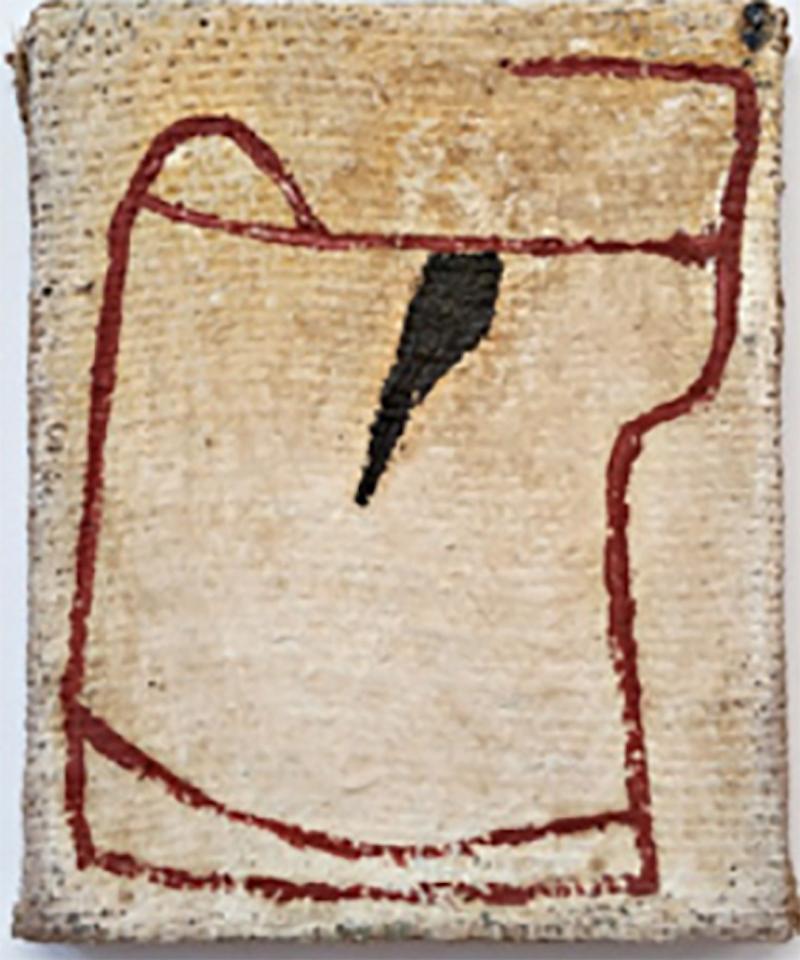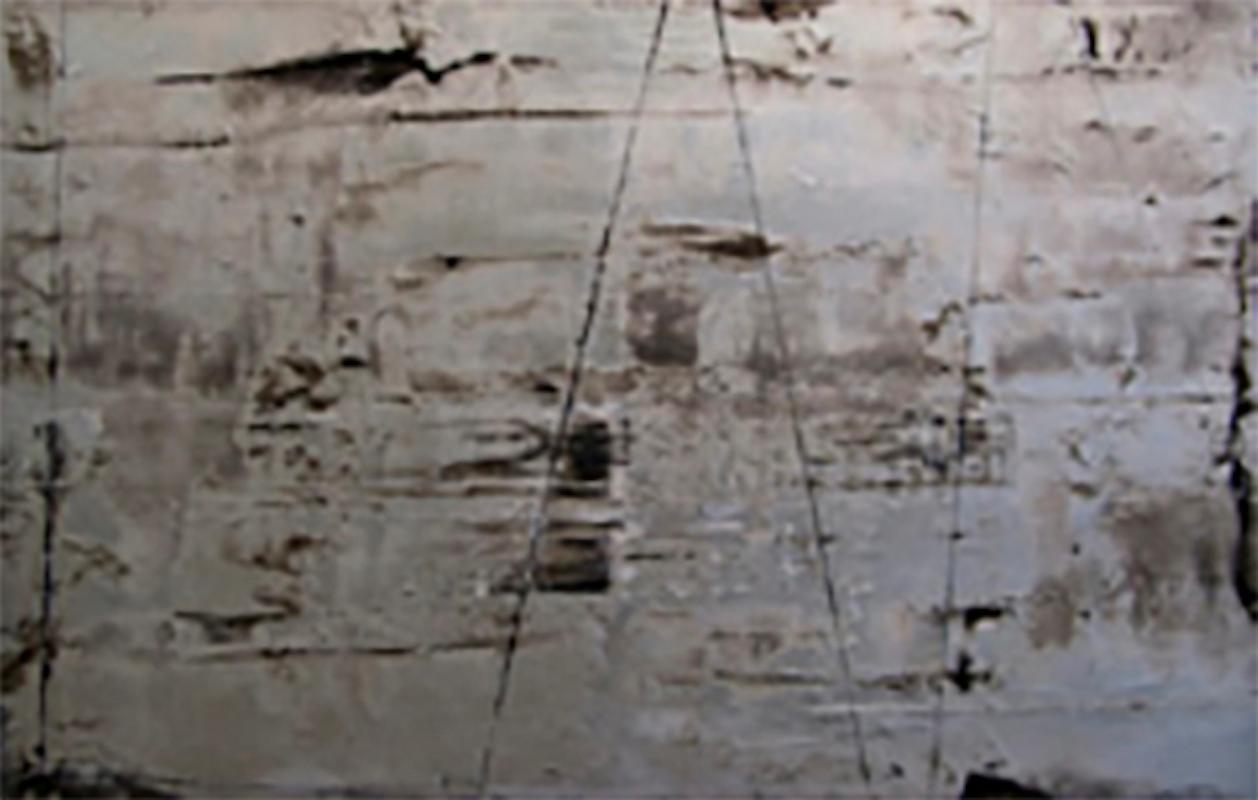Want more images or videos?
Request additional images or videos from the seller
1 of 2
Rick LewisStock Tank2017
2017
About the Item
Stock Tank, 2017
Oil, Bitumen, Burlap on Canvas
Brooklyn based painter Rick Lewis grew up in the Texas Gulf Coast.
Rick received his MFA from the University of North Texas in 1992. He has had 16 solo exhibitions and participated in over 30 group shows. His influences include Alberto Burri, Joan Miro, Paul Klee, Antoni Tapies, Texan visionary painter Forrest Bess, East Asian calligraphy, and Eastern philosophy.
He is the recipient of the Carol Cook Memorial Foundation Arts Award for Excellence in Painting and several Artist in Residency awards including the Millay Colony Residency in Austerlitz, NY, the Bail Purnati Center for the Arts in Bali, Indonesia, and the Edward F. Albee Foundation in Montauk, NY.
Rick Lewis exhibits across the US, Hong Kong, and in London. His work is held in major public and private collections throughout the world.
- Creator:Rick Lewis (1965, American)
- Creation Year:2017
- Dimensions:Height: 76 in (193.04 cm)Width: 48 in (121.92 cm)
- Medium:
- Movement & Style:
- Period:
- Condition:
- Gallery Location:Greenwich, CT
- Reference Number:1stDibs: LU2512418823
About the Seller
4.9
Platinum Seller
These expertly vetted sellers are 1stDibs' most experienced sellers and are rated highest by our customers.
Established in 2012
1stDibs seller since 2013
140 sales on 1stDibs
Typical response time: 2 hours
More From This SellerView All
- TayshaBy Rick LewisLocated in Greenwich, CTTaysha Oil, Marble Powder, Asphalt, Burlap On Canvas 73.25 x 70" I am a visual artist whose work investigates small and large -scale abstraction primarily in the medium of painting ...Category
21st Century and Contemporary Abstract Abstract Paintings
MaterialsMarble
- AdaizanBy Rick LewisLocated in Greenwich, CTAdaizan Oil, Marble Powder, Asphalt, Burlap On Canvas 73.3 x 70" I am a visual artist whose work investigates small and large -scale abstraction primarily in the medium of painting ...Category
21st Century and Contemporary Abstract Abstract Paintings
MaterialsMarble
- NechesBy Rick LewisLocated in Greenwich, CTNeches (Homage for PM) Oil, Bitumen, Aluminum Powder, Sand, Burlap, On Cavas 48" x 41" I am a visual artist whose work investigates small and large -scale abstraction primarily in t...Category
2010s Abstract Abstract Paintings
MaterialsCanvas, Burlap, Powder Coating, Cotton Canvas, Oil
- Me and My ArrowBy Rick LewisLocated in Greenwich, CTMe and My Arrow Oil On Jute, Laid On Canvas 10" x 8" I am a visual artist whose work investigates small and large -scale abstraction primarily in the medium of painting employing th...Category
21st Century and Contemporary Abstract Abstract Paintings
MaterialsCanvas, Jute, Cotton Canvas, Oil
- Rick Lewis - Stock Tank, Painting 2017By Rick LewisLocated in Greenwich, CTTitle: Stock Tank Material: Oil, Bitumen, Burlap On Canvas 76" x 48" I am a visual artist whose work investigates small and large -scale abstraction primarily in the medium of pai...Category
21st Century and Contemporary Abstract Abstract Paintings
MaterialsCanvas, Burlap, Cotton Canvas, Oil, Asphaltum
- ZapataBy Rick LewisLocated in Greenwich, CTZapata Tylose and Burlap On Canvas 30" x 40" I am a visual artist whose work investigates small and large -scale abstraction primarily in the medium of painting employing the use of...Category
21st Century and Contemporary Abstract Abstract Paintings
MaterialsCanvas, Burlap, Cotton Canvas
You May Also Like
- Large Colorful MCM Abstract Expressionist Oil Painting Modernist Ralph RosenborgBy Ralph RosenborgLocated in Surfside, FLRalph Rosenborg (American, 1913-1992) Mountain Weed with Two Clouds, oil on jute canvas, canvas is hand signed recto and verso, artists label and Snyder Fine Art gallery label, The painting is dated 1965. Dimensions: 24 x 36 canvas, framed size is 44.5 x 32.5. Ralph Rosenborg (1913–1992) was an American artist whose paintings were described as both expressionist and abstract and who was a colleague of the New York Abstract Expressionists in the 1940s and 1950s. Unlike them, however, he preferred to make small works and tended to explicitly draw upon natural forms and figures for his abstract subjects. Called a "highly personal artist," he developed a unique style that was considered to be both mystical and magic. His career was exceptionally long, covering more than 50 years. Rosenborg was born in Brooklyn, New York, on June 9, 1913. In 1929, while he was a high school student, he began to work with the designer, artist, and instructor, Henriette Reiss. When Rosenborg encountered her, Reiss was serving as an instructor for the School Art League in the American Museum of Natural History. She was then engaged in instructing both students and their teachers in the city school system by a method she called Rhythmic Design. She believed inspiration for abstract designs could be found in rhythms—rhythms that could be perceived in ordinary perceptions much as they are when listening to music. In May 1930 Reiss selected a drawing by Rosenborg to be shown in an exhibition of creative design by City high school students. From 1930 to 1933, aged 17 to 20, Rosenborg studied with Reiss in what Vivien Raynor of the New York Times called a "pupil-apprentice" relationship. During this time she instructed him in music appreciation, literature, and art history as well as giving technical training in art. In April 1934 Rosenborg was one of 1,500 artists to participate in the annual Salons of America exhibition, which was held that year in Rockefeller Center RCA Building. Each paid two dollars for the privilege of hanging up to three works and none was given prominence over the others. The New York Times reported that by the time the show closed a month later, some 30,000 people had viewed it. The following year he was given a solo exhibition (his first) at the Lounge Gallery of the Eighth Street Playhouse. The year after that he participated in a group show held by the Municipal Art Committee and in 1937 was given a second solo exhibition, this time in the Artists Gallery. That year he also became a founding member of and participated in a group show held by American Abstract Artists, a loose assembly of artists that aimed to promote abstract art and artists in New York. Its founders included Josef Albers, Ilya Bolotowsky, Werner Drewes, Ibram Lassaw, Mercedes Matter, Louis Schanker, Vaclav Vytlacil and Rudolph Weisenborn. At roughly the same time Rosenborg associated himself with a group of abstractionists that called itself "The Ten" (It included Ben-Zion, Mark Rothko, Adolph Gottlieb and Joe Solman) and in May 1938 joined with its other members in what would be his first appearance in a commercial gallery: the Gallery Georgette Passedoit. In 1938 he his work appeared in a group show at the Lounge Gallery, in 1939 in group shows at the Artists Gallery and at the Bonestell Gallery with David Burliuk, Earl Kerkam, Karl Knaths and Jean Liberte...Category
1960s Abstract Expressionist Abstract Paintings
MaterialsJute, Oil, Canvas
- Large Colorful Abstract Expressionist Oil Painting Modernist Beach LandscapeBy Ralph RosenborgLocated in Surfside, FLRalph Rosenborg (American, 1913-1992) "American Landscape, Sky and Shore, 1973" Oil on canvas. Signed 'Rosenborg' (lower right). Titled (verso). 30 x 40 in Ralph Rosenborg (1913–1992) was an American artist whose paintings were described as both expressionist and abstract and who was a colleague of the New York Abstract Expressionists in the 1940s and 1950s. Unlike them, however, he preferred to make small works and tended to explicitly draw upon natural forms and figures for his abstract subjects. Called a "highly personal artist," he developed a unique style that was considered to be both mystical and magic. His career was exceptionally long, covering more than 50 years. Rosenborg was born in Brooklyn, New York, on June 9, 1913. In 1929, while he was a high school student, he began to work with the designer, artist, and instructor, Henriette Reiss. When Rosenborg encountered her, Reiss was serving as an instructor for the School Art League in the American Museum of Natural History. She was then engaged in instructing both students and their teachers in the city school system by a method she called Rhythmic Design. She believed inspiration for abstract designs could be found in rhythms—rhythms that could be perceived in ordinary perceptions much as they are when listening to music. In May 1930 Reiss selected a drawing by Rosenborg to be shown in an exhibition of creative design by City high school students. From 1930 to 1933, aged 17 to 20, Rosenborg studied with Reiss in what Vivien Raynor of the New York Times called a "pupil-apprentice" relationship. During this time she instructed him in music appreciation, literature, and art history as well as giving technical training in art. In April 1934 Rosenborg was one of 1,500 artists to participate in the annual Salons of America exhibition, which was held that year in Rockefeller Center RCA Building. Each paid two dollars for the privilege of hanging up to three works and none was given prominence over the others. The New York Times reported that by the time the show closed a month later, some 30,000 people had viewed it. The following year he was given a solo exhibition (his first) at the Lounge Gallery of the Eighth Street Playhouse. The year after that he participated in a group show held by the Municipal Art Committee and in 1937 was given a second solo exhibition, this time in the Artists Gallery. That year he also became a founding member of and participated in a group show held by American Abstract Artists, a loose assembly of artists that aimed to promote abstract art and artists in New York. Its founders included Josef Albers, Ilya Bolotowsky, Werner Drewes, Ibram Lassaw, Mercedes Matter, Louis Schanker, Vaclav Vytlacil and Rudolph Weisenborn. At roughly the same time Rosenborg associated himself with a group of abstractionists that called itself "The Ten" (It included Ben-Zion, Mark Rothko, Adolph Gottlieb and Joe Solman) and in May 1938 joined with its other members in what would be his first appearance in a commercial gallery: the Gallery Georgette Passedoit. In 1938 he his work appeared in a group show at the Lounge Gallery, in 1939 in group shows at the Artists Gallery and at the Bonestell Gallery with David Burliuk, Earl Kerkam, Karl Knaths and Jean Liberte...Category
1960s Abstract Expressionist Abstract Paintings
MaterialsCanvas, Oil, Jute
- "Landscape" Abstract Seascape- Large Size- Contemporary Art Made in ItalyBy Marilina MarchicaLocated in Agrigento, AGLandscape mixed media on juta canvas 100x100 cm 2020 Original Art the painting is sold stretched on a frame ------------------ Landscape is a series of artworks inspired by landsca...Category
2010s Abstract Landscape Paintings
MaterialsCanvas, Oil, Jute
- The beauty of silenceLocated in Sempach, LUVertical composition made on canvas on cardboard with acrylic paints, as well as texture paste with sand and coffee, textiles, jute fiber. It is covered with a durable acrylic varnis...Category
2010s Abstract Mixed Media
MaterialsOil, Fabric, Acrylic, Coffee, Lacquer, Linen, Jute, Canvas, Textile
- "Ouverture, with Cypress Forms" Stephen Edlich, Abstract Geometric PaintingBy Stephen EdlichLocated in New York, NYStephen Edlich Ouverture, with Cypress Forms, 1982 Signed, dated and titled on the stretcher Acrylic paint, mixed media, and burlap on canvas 60 x 40 inches An artist who worked in the post-cubist and constructivist traditions, Stephen P. Edlich gained a considerable amount of acclaim in the 1970s and 1980s for his collages, sculpture, and paintings. His promising career was cut short due to his untimely death at age 45 in 1989. Edlich was born in New York City. He received his undergraduate degree with a major in fine arts studies from New York University in 1967. During his college years, he traveled to London, where he met the art dealer Victor Waddington and created his first white on white collage. In that same year, he attended a major exhibition of the work of Ben Nicholson, which would be influential source in his art. Edlich returned to England in 1967, where he met Barbara Hepworth and Patrick Heron in London and traveled to St. Ives, Cornwall, long a favorite artists' haunt. Edlich began creating acrylic reliefs...Category
1980s Abstract Geometric Abstract Paintings
MaterialsCanvas, Burlap, Mixed Media, Acrylic
- Crystal lakeLocated in Sempach, LUVertical composition made on canvas on cardboard with acrylic paints, as well as texture paste with sand and coffee, textiles, jute fiber. It is covered with a durable acrylic varnis...Category
2010s Abstract Mixed Media
MaterialsFabric, Textile, Canvas, Jute, Linen, Lacquer, Coffee, Acrylic
